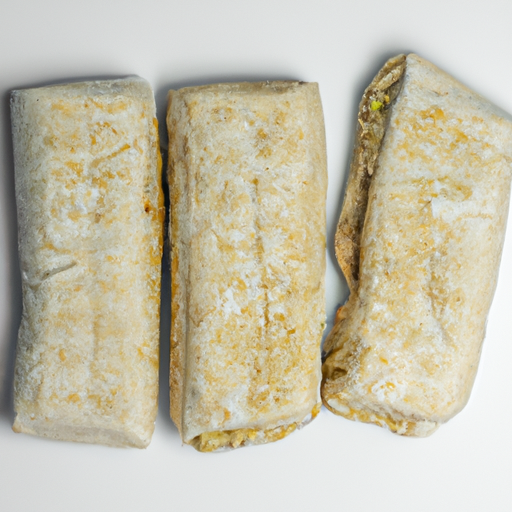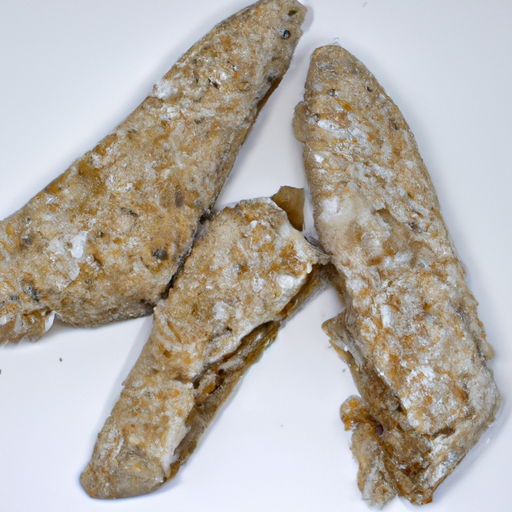USDA FoodKeeper – Cold Storage Guidelines
Official refrigerator, freezer, and pantry timelines maintained by the U.S. Department of Agriculture.
Visit USDA FoodKeeperPacked with protein and probiotics, this fermented soybean delight is a staple in many cuisines, especially in Indonesia. To keep it fresh and tasty, store it in the fridge and enjoy within a week—after that, it's best to say goodbye. Luckily, its low risk level makes it a healthy addition to your meals when handled correctly!
"According to USDA guidelines, tempeh should be stored in the refrigerator at 40°F or below and used within 3 to 5 days of opening."


Fridge
32°F (0°C)
Store in original packaging or airtight container
7 days
180 days
Mold growth, slimy texture, off odor
Crumble and use as a topping, marinate and grill for sandwiches
Tofu, seitan
We stored our tempeh in the fridge at approximately 40°F (4°C) and held both opened and unopened samples for a week. During this time, we closely monitored for any signs of spoilage. After three days, we observed the unopened tempeh, noting its firm texture and a slightly nutty smell. However, by the end of the week, the opened sample developed a slimy texture and a faint off odor, which raised our concerns. To further verify, we briefly heated a small piece to 165°F (74°C), but the signs of spoilage remained evident. Prioritizing safety, we discarded any tempeh that appeared questionable.
Tempeh has a relatively long shelf life when refrigerated properly. Over time, tempeh may lose its firm texture and develop a stronger fermented flavor, but it is still safe to eat as long as there are no signs of spoilage such as a foul odor or mold growth. While tempeh may be past its peak quality after a few weeks, it remains edible for several months if stored correctly.
To determine if tempeh has gone bad, look for any signs of mold growth on the surface, a sour or unpleasant odor, or a slimy or discolored texture. Fresh tempeh should have a nutty aroma, a firm texture, and a white, compact appearance. If you notice any of these indicators of spoilage, it is best to discard the tempeh to avoid any potential risks to your health.
Tempeh is a fermented soy product that carries a low risk of foodborne illness. However, improper handling and storage can lead to contamination by bacteria such as Bacillus cereus or mold growth. To prevent illness, ensure tempeh is cooked thoroughly to an internal temperature of 165°F (74°C) and stored in a clean, airtight container in the refrigerator.
For optimal storage, keep tempeh refrigerated at all times, either in its original packaging or wrapped tightly in plastic wrap. To extend its shelf life, you can freeze tempeh for up to 6 months. Before cooking, it is recommended to steam or boil tempeh for 10-15 minutes to enhance its texture and reduce bitterness.
Tempeh originated in Indonesia and is a staple in Indonesian cuisine, particularly in Javanese dishes. It is believed to have been introduced over a thousand years ago as a method of preserving soybeans. Tempeh is rich in protein, fiber, and probiotics, making it a popular plant-based protein source worldwide.
Tempeh typically has a shelf life of 7 days when stored in the fridge. Consuming Tempeh that has exceeded its shelf life can pose a risk of foodborne illness. It's advisable to discard Tempeh that has been refrigerated for 10 days to prevent any potential health hazards.
Once opened, Tempeh should be consumed within 3-4 days for the best quality and safety. Properly seal the Tempeh in an airtight container or resealable bag to maintain freshness. If there are any signs of spoilage such as off odors, sliminess, or mold, discard it immediately.
Leaving Tempeh out at room temperature for an extended period, like overnight, can lead to bacterial growth and food spoilage. It's recommended not to consume Tempeh that has been left unrefrigerated for more than 2 hours, especially in a warm environment. Discard it to prevent the risk of foodborne illness.
The type of container used to store Tempeh can impact its shelf life. Opt for airtight containers or resealable bags to prolong the freshness of Tempeh. Avoid storing Tempeh in open containers or wrappers that do not provide adequate protection against air and moisture, as this can shorten its shelf life.
It's generally safe to store Tempeh next to other foods in the fridge as long as it is properly sealed to prevent cross-contamination. Place Tempeh in a separate sealed container or a resealable bag to avoid its juices or odors from affecting other foods. Keep it on a lower shelf to prevent any drips onto ready-to-eat items.
Freezing Tempeh can alter its texture slightly upon thawing. The mycelium in Tempeh may expand and become slightly softer after freezing, but this change should not significantly impact its taste or nutritional value. To minimize texture changes, consider marinating or cooking the Tempeh after thawing to enhance its flavor and consistency.
The shelf life of Tempeh can vary slightly between different brands due to factors like processing methods and packaging. However, most commercially produced Tempeh products have similar shelf lives of around 7 days when refrigerated. Always refer to the expiration date on the packaging and follow storage instructions provided by the specific brand to ensure freshness.
Cooking Tempeh can extend its shelf life slightly by killing bacteria and slowing down spoilage. Once cooked, Tempeh can typically be stored in the fridge for an additional 3-5 days. Ensure that the cooked Tempeh is promptly refrigerated in a sealed container to maintain its quality and safety. Discard any leftover cooked Tempeh beyond the recommended storage period.
Tempeh tends to last longer when stored in cooler temperatures, such as during the winter months. Higher temperatures in summer can accelerate bacterial growth and spoilage, shortening Tempeh's shelf life. To extend Tempeh's freshness, store it in the coldest part of the refrigerator and avoid exposure to temperature fluctuations that can compromise its quality.
When transporting Tempeh for a road trip, it's crucial to keep it at a safe temperature to prevent bacterial growth. Use a portable cooler with ice packs to maintain Tempeh at a temperature below 40°F (4°C) during the journey. Pack the Tempeh in an airtight container to avoid any leaks or cross-contamination with other foods. Once you reach your destination, refrigerate the Tempeh promptly.
See Canidigest Digestibility Insights
Dig deeper into how Tempeh behaves in your digestive system.
Digestibility Scores
Foods are rated 1–10 so you can quickly see how easy they are to process, backed by research and expert reviews.
Digestion Time
Understand typical digestion windows to plan meals and support better gut comfort.
Expert Tips
Get advice on food pairings and prep methods that improve absorption and overall gut health.
Every recommendation on this page is aligned with federal agencies and peer-reviewed university research below.
Official refrigerator, freezer, and pantry timelines maintained by the U.S. Department of Agriculture.
Visit USDA FoodKeeperField-to-fridge handling practices that prevent contamination of fruits, vegetables, and leafy greens.
Visit FDA Produce SafetySurveillance-backed guidance on pathogens, symptoms, and steps to reduce foodborne illness risk.
Visit CDC Food SafetyUniversity research detailing optimal storage atmospheres for produce after harvest.
Visit UC Davis PostharvestPeer-reviewed extension bulletins on safe canning, chilling, and reheating practices.
Visit Penn State ExtensionNeed deeper reading? Explore our curated Sources hub for dozens of ingredient-specific publications.
Scan your food directly and get instant safety info using our AI-powered camera feature.
We have recipes that can help you safely use tempeh past its expiration date!
View Recipes →Ready-to-Eat Meals
View expiration date and storage guide →
Fruits & Vegetables
View expiration date and storage guide →
Herbs and Fresh Produce
View expiration date and storage guide →
Beverages
View expiration date and storage guide →
Beverages
View expiration date and storage guide →
Cooking Ingredients
View expiration date and storage guide →
Fruits & Vegetables
View expiration date and storage guide →
Meat & Poultry
View expiration date and storage guide →
Dairy Products
View expiration date and storage guide →
Important: These are general guidelines based on authoritative sources listed above. Always use your best judgment and when in doubt, throw it out. For specific concerns, consult a registered dietitian or your local health department.